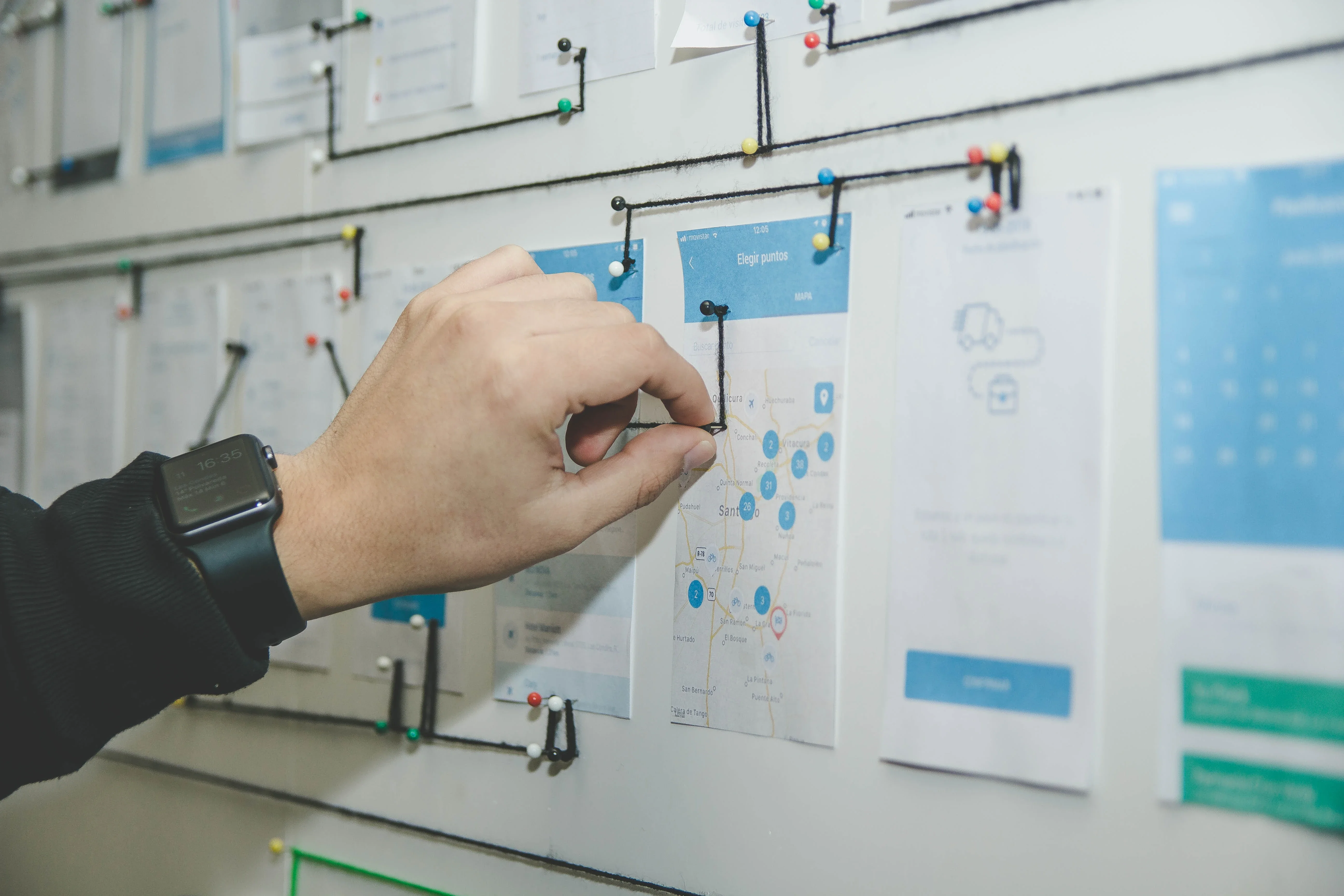Interaction design for beginners

This article is a good starting point for anyone who wants to learn more about interaction design. To this end, we briefly cover the history, guiding principles, notable people and tools associated with this fascinating discipline.
What is interaction design?
Interaction design began when the first screen contained more than just static copy. Everything from a button to a link or a form field is part of interaction design. Over the past few decades, a number of books have been published explaining the facets of interaction design and exploring the myriad ways in which user experience design intersects.
Interaction design was developed to facilitate the interaction between people and their environment. Unlike user experience design, which considers all aspects related to a user, interaction designers are only responsible for the specific interactions between users and a screen. But of course, in practice, things are never so sharply divided.
Methods
Although interaction design encompasses countless types of web and mobile applications and websites, there are certain methods that all designers refer to. We'll explore some of the most common methods here: goal-oriented design, usability, the five dimensions, cognitive psychology, and user interface guidelines.
Goal-oriented design
Purposeful design was popularized by Alan Cooper in his 1999 book, The Inmates Are Running the Asylum: Why High Tech Products Drive Us Crazy and How to Restore the Sanity: Why High Tech Products Drive Us Crazy and How to Restore the Sanity. Alan defines purposeful design as putting problem solving as the highest priority. In other words, goal-oriented design focuses first and foremost on satisfying specific needs and desires of the end user. In contrast to older design methods that focus on the available capabilities on the technological side.
Today, some of the points Alan raises seem obvious, as designers rarely choose interactions based solely on development constraints. However, at its core, the methodology is about satisfying the needs and wants of the end user, which is more necessary today than ever before.
According to Alan, the process of goal-oriented design requires five steps, as we think of as interaction designers:
- Design first, then program. In other words, goal-oriented design starts with thinking about how users interact (and how things look!) rather than starting with technical considerations.
- Separate the responsibility for design from the responsibility for programming. This refers to the need to have an interaction designer who is committed to the end user without worrying about the technical constraints. A designer should be able to rely on their developer to master the technical aspects.
- Designers are responsible for product quality and user satisfaction. Although - or precisely because - stakeholders or customers have their own goals, the interaction designer is responsible to the person on the other side of the screen.
- This particular idea has evolved into something more commonly associated with user research today: personas. However, Alan reminds us to connect personas back to the product and constantly ask: Where will this person use this product? Who are they? What do they want to achieve?
- Work in pairs. Finally, interaction designers should never work in a silo. Collaboration with others, what Alan Cooper calls the "design communicator," is critical. Although the design communicator Alan envisioned in 1999 was typically a copywriter responsible for providing marketing copy for products, today this has been expanded to include a project manager, content strategist, information architect and many others.
Usability
Usability may feel like a vague term, but basically designers are simply asking, "Can someone easily use this application?" It's been explained in countless ways in books and on the Internet, and we'll point out a few different definitions to uncover some commonalities:
In the book Human Computer Interaction by authors Alan Dix, Janet E. Finlay, Gregory D. Abowd, and Russell Beale, ease of use is broken down into three principles:
- Learnability: How easily can a new user learn to navigate the user interface?
- Flexibility: In what ways can a user interact with the system?
- Fault tolerance: How well do we support users when errors occur?
Meanwhile, Nielsen and Schneiderman explain that usability consists of five principles:
- Learnability: How easily can a new user learn to navigate the user interface?
- Efficiency: How quickly can users complete tasks?
- Memorability: If a user has not visited the system for a long time, how well will they remember it?
- Errors: How many errors do users make and how quickly can errors be rectified?
- Satisfaction: Do users use the user interface and are they satisfied with the results?
Finally, the ISO 9241 standard has divided the topic into five principles:
- Learnability: how easily can a new user learn to navigate the user interface?
- Comprehensibility: How well can a user understand what they see?
- Usability: How much control does the user have within the user interface?
- Attractiveness: How visually appealing is the interface?
- Usability: Does the interface conform to standards?
Of course, there are generally known patterns that determine whether a user interface is "usable". But regardless of the usability principles a designer follows, this is an important consideration for any user interface.

The five dimensions
In Bill Moggridge's book "Designing Interactions", Gillian Crampton Smith, a scientist in the field of interaction design, introduced the concept of the four dimensions of an "interaction design language". In other words, these dimensions represent the interactions themselves and as a result they represent the communication between a user and the screen. The four original dimensions are: Language, visual representations, physical objects or space, and time. Recently, Kevin Silver, lead interaction designer at IDEXX Laboratories, added a fifth dimension.
- 1D: Words should be easy to understand and written in a way that easily conveys information to the end user.
- 2D: visuals are any graphics or images, essentially anything that is not text. They should be used in moderation so as not to "overwhelm" the user.
- 3D: Physical objects or spaces refer to the physical hardware, whether it's a mouse and keyboard or a mobile device a user is interacting with.
- 4D: Time is the length that the user interacts with the first three dimensions. It includes the way the user can measure progress, as well as sound and animation.
- 5D: Behavior was added by Kevin Silver in his article What Puts the Design in Interaction Design. It is the emotions and reactions that the user has when interacting with the system.
With these five dimensions, an interaction designer can pay close attention to the experience the user has when communicating and connecting with a system.
Cognitive psychology
Cognitive psychology studies how the mind works and the mental processes that take place there. These processes include attention, language use, memory, perception, problem solving, creativity and thinking.
While psychology is an immensely broad field, there are some key elements of cognitive psychology that are particularly valued and may have helped shape the field of interaction design. Here are just a few of them.
- Mental models are the images in a user's mind that indicate their expectation of a particular interaction or system. By learning the user's mental model, interaction designers can create systems that feel intuitive.
- Interface metaphors use familiar actions to guide users to new actions. For example, the trash can icon on most computers resembles a physical trash can to alert a user to the expected action.
- Circumstances are things that are not only meant to do something, but also look like they are meant to do something. A button that looks like a physical object that you can press is designed so that someone unfamiliar with the button still understands how to use it.
Guidelines for user interfaces
This section is a bit of a misnomer. There are actually no single guidelines for user interfaces. However, the idea of creating user interface guidelines is a methodology. Guidelines have been created by most major technology design companies, including Apple and Android, Java and Windows. The goal is the same for all of them: to point potential designers and developers to advice and recommendations that will help them create universally intuitive interfaces and programs.
Daily tasks and services
An interaction designer plays a key role throughout the development process. They have a number of tasks that are critical to the project team. These usually include creating a design strategy, wireframing key interactions and prototyping.
Design strategy
Although the boundaries here are blurred, one thing is certain: an interaction designer needs to know who they are designing for and what the user's goals are. Usually this is provided by a user researcher. In turn, an interaction designer evaluates the goals and develops a design strategy, either independently or with the help of other designers in the team. A design strategy helps team members to collectively understand what interactions need to take place to achieve the user goals.
Wireframes of the most important interactions
Once the interaction designer has a good idea of the strategy motivating a design, they can begin to sketch out the interfaces that will facilitate the necessary interactions. The devil is in the details here: some professionals literally sketch these interactions on an iPad or board, while others use web applications or use a combination of these. Some professionals create these interfaces together, while others create them alone. It all depends on the interaction designer and the particular workflow
Prototypes
Depending on the project, the next logical step for an interaction designer may be to create prototypes. There are various ways in which a team can prototype an interaction, which we will not go into in detail here. For example, html/css prototypes or Papierprototypes.
Stay up to date
One of the most difficult aspects is the speed of change in the industry. Every day, new designers develop the theme in a different direction. As a result, users expect to see these new interactions on your website. The prudent interaction designer responds to this evolution by constantly searching the web for new interactions and utilizing new technologies. The right interaction or technology is the one that best meets the person's needs - not just the newest or most exciting. Interaction designers also stay on the cutting edge by following thought leaders on Twitter and pushing the medium itself.



